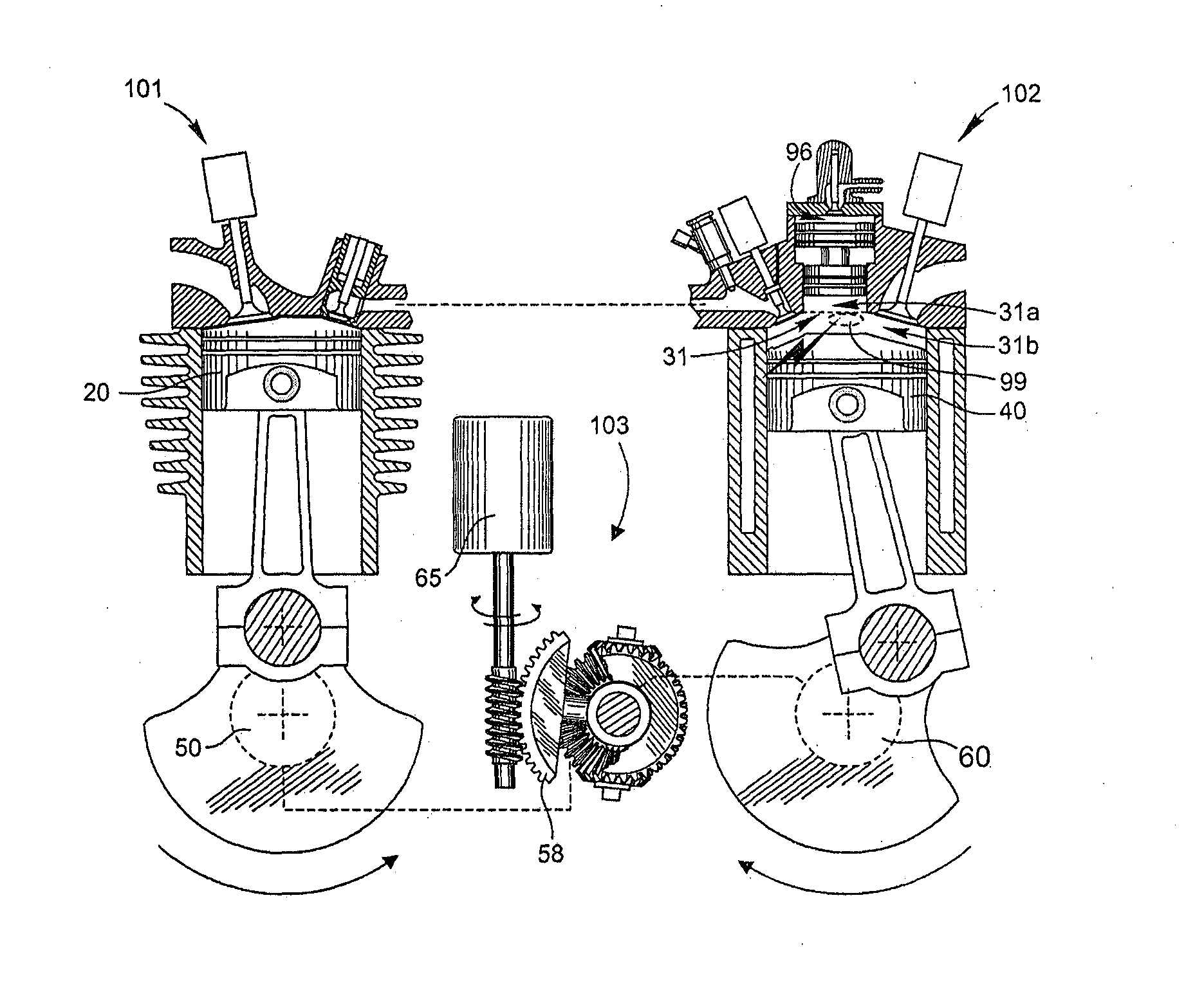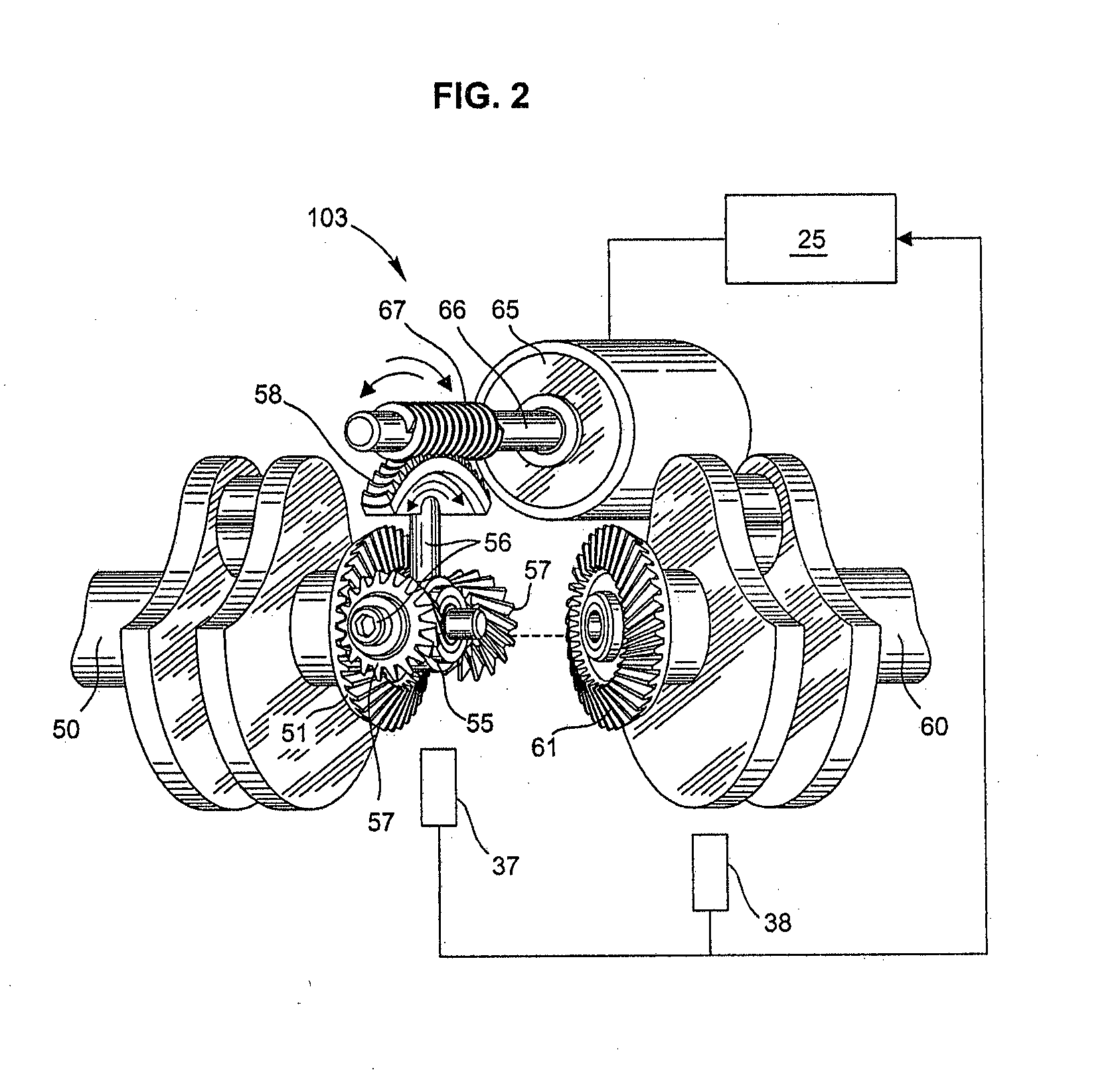Split Cycle Phase Variable Reciprocating Piston Spark Ignition Engine
a reciprocating piston, phase variable technology, applied in the direction of engine components, machines/engines, engine controllers, etc., can solve the problems of poor overall thermodynamic efficiency, slow flame propagation, increase in induction fluid temperature, etc., to achieve higher chamber pressure, high thermodynamic efficiency, and high charge density
- Summary
- Abstract
- Description
- Claims
- Application Information
AI Technical Summary
Benefits of technology
Problems solved by technology
Method used
Image
Examples
Embodiment Construction
[0027]With reference first to FIG. 1, a split cycle phase variable reciprocating piston spark ignition engine including a first piston cylinder configuration 101 for carrying out the intake and compression strokes of a four stroke engine cycle and a second piston cylinder configuration 102 for carrying out the expansion and exhaust strokes of a four stroke engine cycle. The first piston cylinder configuration 101 may hereinafter be referred to as the Compressor Unit 101 and the second piston cylinder configuration 102 may hereinafter be referred to as the Power Unit 102. The Compressor Unit 101 comprises a cylinder 10 into which a piston 20 reciprocates within a distance determined by a first crankshaft 50 and the Power Unit 102 comprises a cylinder 30 into which a piston 40 reciprocates within a distance determined by a second crankshaft 60. A connecting rod 21 connects the piston 20 to the first crankshaft 50 and a connecting rod 41 connects the piston 40 to the second crankshaft ...
PUM
 Login to View More
Login to View More Abstract
Description
Claims
Application Information
 Login to View More
Login to View More - R&D
- Intellectual Property
- Life Sciences
- Materials
- Tech Scout
- Unparalleled Data Quality
- Higher Quality Content
- 60% Fewer Hallucinations
Browse by: Latest US Patents, China's latest patents, Technical Efficacy Thesaurus, Application Domain, Technology Topic, Popular Technical Reports.
© 2025 PatSnap. All rights reserved.Legal|Privacy policy|Modern Slavery Act Transparency Statement|Sitemap|About US| Contact US: help@patsnap.com



